I'm feeling much better today and Peter thinks he is! This morning is a visit to the world listed Prague Castle. It is on the hill overlooking Prague. Castles were built for the Emperors, those that were ruling and they were always built on the highest part of the city. The castle area is referred to as the 'Old City' of Prague. After a wander around the exterior of the castle area, we would then walk 3 kms down the hill, stroll over Charles Bridge, enjoy walking the narrow cobbled streets, and finish where Ivo had taken us on our 'Prague Orientation Walk' the night before.
We were introduced to our guide Helena when we hopped on the bus at 8.45am. Helena is Ivo's Mum, so now we have met all members of the family. Helena was lovely and ensured we were where we needed to be at whatever time. Like 10 minutes before the changing of the guard, with our toes touching the white line, so no one else would be able to get in front of our group.
We can't believe how many people are walking these historic streets. It is also an extra busy weekend as the gay community are celebrating 'Prague Pride'. I thought the 'Pride' bit may have had something to do with the communism display in the centre of the city. How wrong I was!
Our visit to the 'Old City' of Prague was really lovely, with lots of statues and interesting buildings to photograph. From there we walked down the narrow cobbled street to Charles Bridge and then back to the hotel, clicking all the way! Some of the highlights were:
Prague Castle: This castle is the largest ancient castle in the world. The main gate has been constructed in remembrance of the empress Maria Theresa. We are still being told stories of Maria Theresa. The entrance gate is a part of Rococo railing which comes from the period of the reign of the empress Maria Theresa. Above the main gateway a partly gold-coated wrought arch with a royal crown at the top can be seen. Sides of the gate are formed by bulky square columns bearing sculptures of fighting giants from 1768.
St. Vitus Cathedral at Prague Castle: The history of St Vitus Cathedral is almost as old as Prague Castle itself. The first sanctuary on the place of present St Vitus Cathedral was built by Wenceslas I, Duke of Bohemia, in 926-30 as the third church built at Prague Castle. The founder Wenceslas is entombed here along with the tombs of many Bohemian Kings and Holy Roman Emperors. The cathedral is under the ownership of the Czech Government and the Cathedral is where the Bohemian Crown Jewels are kept. The Jewels are exhibited only to mark special occasions. Exhibitions can take place only at the Prague Castle. In the 20th century there were nine such moments in history. The main entrance to the cathedral is named the 'Golden Portal'. A large mosaic above the entrance was made in a Bohemian glass factory with the assistance of Italian artists. Jesus is surrounded by angels and the kneeling Czech patrons – St Prokop, St Zikmund and St Vitus on the left and St Wenceslas, St Ludmila and St Vojtech on the right. The mosaic covers an area of 82 square meters. The theme of the whole mosaic is the 'Last Judgement' as the end of life on earth. Another spectacular part of St. Vitus Cathedral is the Rose Window. It is spectacular not only from the outside, but especially from the inside.
Saint George's Basilica: This is the oldest surviving church building within Prague Castle. It is dedicated to Saint George. The Baroque façade dates from the late 17th century. A Gothic style chapel dedicated to Ludmila of Bohemia holds the tomb of the saint. The shrines of two other saints of Bohemia are also in the basilica.
Statue of Charles IV: Charles IV is the Holy Roman Emperor and King of Bohemia and his statue is situated at the Knights of the Cross Square at the front of Charles Bridge. It is one of the most important Neo-Gothic statues in Central Europe. Charles is often referred to 'Pater patriae' (father of the country) and was an important personality of the medieval Europe. He made Prague the capital of the Holy Roman Empire and he had many buildings built in the city. He also founded the oldest university in Central Europe – the Charles University – in 1348. Many places and buildings in Prague and in the whole country bear his name: the Charles Bridge, the Charles Square, and others. His monument was made on the occasion of the 500th anniversary of the Charles University in 1848. The Monument is about 4 metres high and it stands on a pedestal of the same height. Charles IV has a sword in one hand and a foundation charter of the university in the other hand.
Charles Bridge: The bridge is 621 metres (2,037 ft) long and nearly 10 metres (33 ft) wide, and it follows the example of the Stone Bridge in Regensburg. It was built as a bow bridge with 16 arches shielded by ice guards, crossing the Vltava River in Prague. It is protected by three bridge towers, two of them on the Lesser Quarter side and the third one on the Old Town side. The Old Town Bridge Tower is often considered to be one of the most astonishing civil gothic-style buildings in the world. The bridge is decorated by a continuous alley of 30 statues, most of them baroque-style, originally erected around 1700 but now all replaced by replicas.
Clementinum Observatory: In 1752 the first regular meteorological measurement was initiated and it has been continuing until now. The year 1775 is considered as the beginning of comprehensive succession. 'Mannheim clocks' functioned as regular temperature measurement, according to which weather behaviour was noted always at 7 am,7 pm and 9 pm. That is also why an average temperature is nowadays counted as the sum of temperatures of these hours – temperature at 9 pm is included twice and then divided by four. Weather station Clementinum is the oldest weather observation and is considered unique in the whole of Central Europe.
Prague Astronomical Clock on the Old Town Hall: This is in the Old Town Square. Every hour, hundreds of tourists from all over the world with cameras at the ready gather in front of the Old Town Hall to enjoy a fascinating mechanical performance which in the Middle Ages was considered one of the wonders of the world. The Prague Astronomical Clock, which for 600 years has been one of the greatest treasures of the city, still amazes people with its procession of Apostles, moving statues and visualization of time like no other instrument in the world.
Old Town Hall: The most famous building on the Old Town Square is the fourteenth-century Old Town Hall. Its Gothic tower, built in 1364, is one of the most recognisable buildings in Prague.
The Church of Our Lady before Týn: This church has been the main church of this part of the city since the 14th century and it is in 'Old Town Square'. The church's towers are 80 metres high and can be seen from all over Prague.
Wenceslas Square: This is at the top of the main street in Prague. The south end of Na príkope meets Wenceslas Square. The 750-metre long and 60-metre wide boulevard was first laid out over 600 years ago in the Charles IV period, when it was used as a horse market. Since then the square has been a regular parade ground for every kind of person, organisation or political party known in the Czech Republic. The street can, and has before, comfortably held 400,000 people. In the upper part of the boulevard is the statue of St. Wenceslas on his horse. In the square are Memorial Plagues to Jan Palach and Jan Zajic, who were both killed in 1969. Jan Palach (11 August 1948 – 19 January 1969) was a Czech student of history and political economy at Charles University in Prague. He committed self-immolation as a political protest against the end of the Prague Spring resulting from the 1968 invasion of Czechoslovakia by the Warsaw Pact armies. In August 1968, the Soviet Union invaded Czechoslovakia to crush the liberalising reforms of Alexander Dubcek's government, during what was known as the Prague Spring. In 1969 Jan Zajic took part in a hunger strike and a commemoration ceremony by students for Jan Palach near the statue of Saint Wenceslas in Prague. On the day of the twenty-first anniversary of the Communist takeover (25 February 1969), he travelled to Prague accompanied by three other students. His intention was to warn the public against the forthcoming political 'normalisation' of the country. He had several letters challenging the people to fight against the Warsaw Pact's military occupation of Czechoslovakia. Around 1:30 in the afternoon he walked into the passageway of the building at No. 39 on Wenceslas Square and ignited his chemical-soaked clothes. He was unable to run out of the door, and collapsed and died in the hallway. The police prohibited his burial in Prague because they feared demonstrations, such as the ones that followed the burial of Jan Palach. He was later buried in his hometown of Vítkov. After the Velvet Revolution, a bronze cross was set into the ground in front of the National Museum in Wenceslas Square to honour both Palach and Zajíc. After researching this information, we now more fully comprehend what Ivo was referring to on Friday night, when he said it was good that the display was in the main street of Prague and today's generation needed to more fully informed of the happenings of 1968, which lead to Czechoslovakia remaining controlled until 1989.
We had a rest after purchasing something for lunch. The Dr had suggested we should try to take it easy for a bit. By 4.00pm we had had enough of the hotel room and the air conditioning, so we went for a walk. We were just in time to see the last of the 'Prague Pride' parade coming down the street, with plenty of cops walking and driving behind.
At 7.00pm we put the glad rags on again for another 'Farewell Dinner'. This definitely will be the last for this tour with APT. It was in the dining room of the Raddison Blu Hotel, where we are staying. Lovely hotel and lovely to have a bit more space in our room after being on the ship for two weeks. Especially the bathroom. It is a great location as well. The dinner was a pretty tame affair compared to our farewell dinners in Canada, but the meal and service was nice.
Day one in the beautiful city of Prague
Saturday, August 13, 2016
 Prague, Prague, Czech Republic
Prague, Prague, Czech Republic
Other Entries
-
1We will soon be up, up and away....
Jul 2519 days prior Perth, Australiaphoto_camera4videocam 0comment 7
Perth, Australiaphoto_camera4videocam 0comment 7 -
2Day 1 in the city Paris....capital of France
Jul 2618 days prior Paris, Francephoto_camera32videocam 0comment 10
Paris, Francephoto_camera32videocam 0comment 10 -
3A day in Paris to well and truly remember......
Jul 2717 days prior Paris, Francephoto_camera42videocam 0comment 4
Paris, Francephoto_camera42videocam 0comment 4 -
4Our last day in Paris was a 'Cultural Experience'
Jul 2816 days prior Paris, Francephoto_camera40videocam 0comment 6
Paris, Francephoto_camera40videocam 0comment 6 -
5A Fast Ride to...canals & a walk in Amsterdam
Jul 2915 days prior Amsterdam, Netherlandsphoto_camera38videocam 0comment 4
Amsterdam, Netherlandsphoto_camera38videocam 0comment 4 -
6No Cologne...a walk in Bonn instead
Jul 3113 days prior Bonn Germany, Germanyphoto_camera34videocam 0comment 5
Bonn Germany, Germanyphoto_camera34videocam 0comment 5 -
7Today was 'Castle Day' on the Rhine River Germany
Aug 0112 days prior Rudesheim Germany, Germanyphoto_camera28videocam 0comment 5
Rudesheim Germany, Germanyphoto_camera28videocam 0comment 5 -
8A visit to the picturesque Miltenberg in the rain
Aug 0211 days prior Miltenberg, Germanyphoto_camera16videocam 0comment 3
Miltenberg, Germanyphoto_camera16videocam 0comment 3 -
9Wurzburg & Rothenburg-Capital of Wine Franconi
Aug 0310 days prior Rothenburg ob der Tauber, Germanyphoto_camera26videocam 0comment 4
Rothenburg ob der Tauber, Germanyphoto_camera26videocam 0comment 4 -
10The incredible RMD Canal & the gem Bamberg
Aug 049 days prior Bamberg, Germanyphoto_camera28videocam 0comment 3
Bamberg, Germanyphoto_camera28videocam 0comment 3 -
11A visit to the Nazi city of Nuremberg
Aug 058 days prior Nuremberg, Germanyphoto_camera28videocam 0comment 3
Nuremberg, Germanyphoto_camera28videocam 0comment 3 -
12A run for it....but the Bogan Bridge won
Aug 067 days prior Regensburg, Germanyphoto_camera24videocam 0comment 1
Regensburg, Germanyphoto_camera24videocam 0comment 1 -
13A long day..but a fabulous day in Salzburg Austria
Aug 076 days prior Salzburg, Austriaphoto_camera20videocam 0comment 3
Salzburg, Austriaphoto_camera20videocam 0comment 3 -
14Under the Bogan at 2.00am...now to Vienna
Aug 085 days prior Melk, Austriaphoto_camera24videocam 0comment 1
Melk, Austriaphoto_camera24videocam 0comment 1 -
15Two days in the Capital of Classical Music
Aug 094 days prior Vienna, Austriaphoto_camera34videocam 0comment 5
Vienna, Austriaphoto_camera34videocam 0comment 5 -
16A short visit to Budapest the Queen of the Danube
Aug 112 days prior Budapest, Hungaryphoto_camera45videocam 0comment 0
Budapest, Hungaryphoto_camera45videocam 0comment 0 -
17Farewell to the MS AmaReina.....but Prague awaits
Aug 121 day prior Prague, Czech Republicphoto_camera14videocam 0comment 3
Prague, Czech Republicphoto_camera14videocam 0comment 3 -
18Day one in the beautiful city of Prague
Aug 13 Prague, Czech Republicphoto_camera54videocam 0comment 0
Prague, Czech Republicphoto_camera54videocam 0comment 0 -
19Visit to a Chateau in the country..Day 2 in Prague
Aug 141 day later Prague, Czech Republicphoto_camera40videocam 0comment 0
Prague, Czech Republicphoto_camera40videocam 0comment 0 -
20A flight and the 'Chunnel' to get to London
Aug 152 days later London, United Kingdomphoto_camera14videocam 0comment 1
London, United Kingdomphoto_camera14videocam 0comment 1 -
21London.....plenty of reminiscing of 32 years ago
Aug 163 days later London, United Kingdomphoto_camera30videocam 0comment 1
London, United Kingdomphoto_camera30videocam 0comment 1 -
22Six days in Warwick for the 28th ACWW Conference
Aug 174 days later Warwick, United Kingdomphoto_camera20videocam 0comment 4
Warwick, United Kingdomphoto_camera20videocam 0comment 4 -
23Conference over...now some time with the relies
Aug 2310 days later Merton Devon, United Kingdomphoto_camera22videocam 0comment 6
Merton Devon, United Kingdomphoto_camera22videocam 0comment 6 -
24A great day touring the Moorlands of Dartmoor
Aug 2411 days later Merton, United Kingdomphoto_camera24videocam 0comment 4
Merton, United Kingdomphoto_camera24videocam 0comment 4 -
25South Devon today visiting Brixham & Dartmouth
Aug 2512 days later Dartmouth, United Kingdomphoto_camera24videocam 0comment 2
Dartmouth, United Kingdomphoto_camera24videocam 0comment 2 -
26Lots of walking and climbing today at North Devon
Aug 2613 days later Clovelly, United Kingdomphoto_camera32videocam 0comment 2
Clovelly, United Kingdomphoto_camera32videocam 0comment 2 -
27An overnight stay in Falmouth Cornwall
Aug 2714 days later Falmouth, United Kingdomphoto_camera22videocam 0comment 1
Falmouth, United Kingdomphoto_camera22videocam 0comment 1 -
28We've now been to the bottom of England's boot
Aug 2815 days later Lands End, United Kingdomphoto_camera18videocam 0comment 0
Lands End, United Kingdomphoto_camera18videocam 0comment 0 -
29A Day filled with so much 'Family History'.....
Aug 2916 days later Merton, United Kingdomphoto_camera14videocam 0comment 1
Merton, United Kingdomphoto_camera14videocam 0comment 1 -
30Time for Merton Goodbyes........
Aug 3017 days later Merton, United Kingdomphoto_camera10videocam 0comment 0
Merton, United Kingdomphoto_camera10videocam 0comment 0 -
31A visit and lunch in 'Historic Plymouth'
Aug 3118 days later Plymouth, United Kingdomphoto_camera16videocam 0comment 0
Plymouth, United Kingdomphoto_camera16videocam 0comment 0 -
32A little exploring of Tavistock
Sep 0119 days later Tavistock, United Kingdomphoto_camera24videocam 0comment 3
Tavistock, United Kingdomphoto_camera24videocam 0comment 3 -
33A visit to Aunty Kath's & Kit Hill
Sep 0220 days later Callington, United Kingdomphoto_camera16videocam 0comment 1
Callington, United Kingdomphoto_camera16videocam 0comment 1 -
34Boundy family gathering with the Aussies
Sep 0321 days later Launceston, United Kingdomphoto_camera10videocam 0comment 1
Launceston, United Kingdomphoto_camera10videocam 0comment 1 -
35Sad to say another 'Goodbye'........
Sep 0422 days later Harrowbarrow England, United Kingdomphoto_camera14videocam 0comment 1
Harrowbarrow England, United Kingdomphoto_camera14videocam 0comment 1 -
36A walk around the docks of Southampton
Sep 0523 days later Southampton, United Kingdomphoto_camera22videocam 0comment 0
Southampton, United Kingdomphoto_camera22videocam 0comment 0

 Prague, Prague, Czech Republic
Prague, Prague, Czech Republic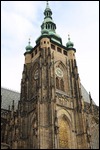
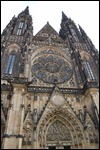
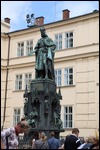
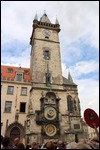
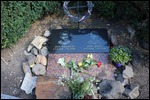








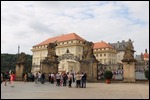
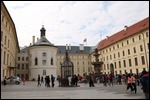
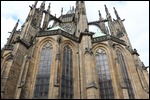
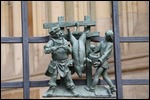
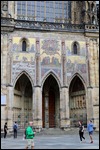
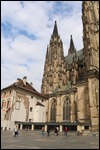
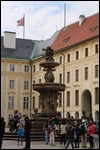
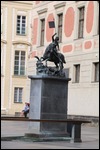
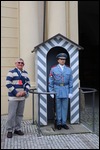
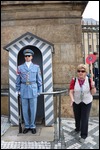

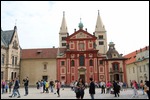
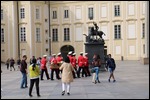
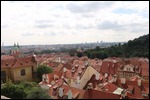
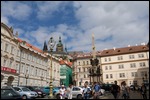
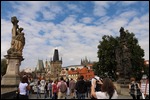
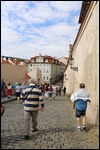
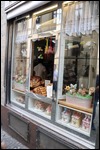
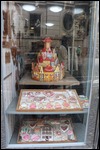
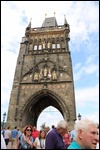
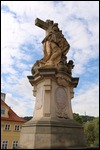
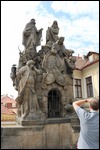
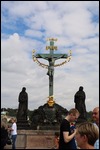
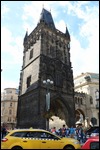
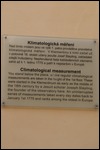

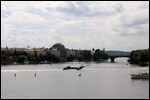
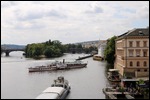
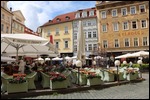
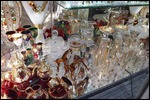
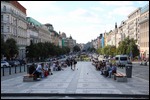
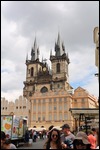
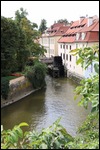
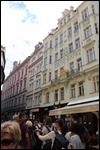
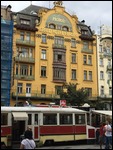
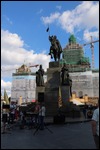
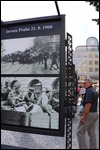


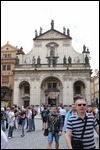
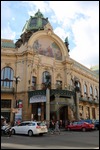
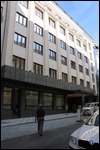
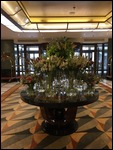

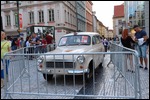
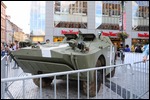
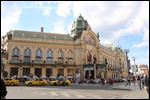

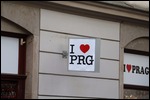
2025-05-23